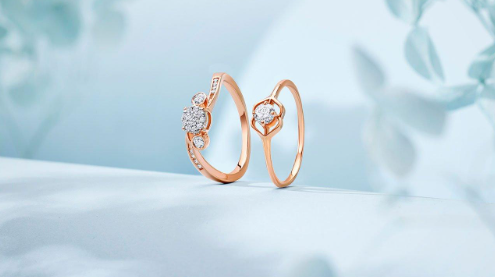The 1700s were a pivotal time in British history, marked by significant changes in social customs and romantic ideals, particularly regarding engagement rings UK. This era saw the emergence of new traditions surrounding engagement rings, as they transformed from simple tokens of commitment into elaborate symbols of love and sentiment. The choice of gemstones during this period reflected not only the aesthetic preferences of the time but also deeper meanings associated with love and devotion.
At the beginning of the 18th century, engagement rings were often unadorned, typically made from gold or silver. However, as the century progressed, the introduction of gemstones began to revolutionize ring designs. The Georgian period (1714-1830) was characterized by ornate and intricate jewelry, with gemstones becoming increasingly popular choices for engagement rings. The wealthy elite embraced these colorful stones, marking a departure from the more utilitarian designs of earlier decades.
Diamonds were highly prized during the 1700s, regarded as symbols of strength and eternity. However, they were often complemented by a variety of colored gemstones that conveyed specific meanings. Sapphires, for example, became associated with loyalty and fidelity, making them a fitting choice for engagements. Their deep blue hues captivated couples, who viewed them as emblems of enduring love. The fascination with sapphires mirrored the growing romanticism of the time, as couples sought to express their emotions through their jewelry.
Emeralds also gained prominence as romantic gemstones. Known for their lush green tones, emeralds symbolized rebirth, hope, and love. This connection to nature and renewal resonated with couples, making emeralds a favored choice for engagement rings. The romantic imagery associated with these stones enhanced their appeal, as couples sought pieces that reflected their aspirations for a loving future together.
Another popular gemstone was the garnet, which, with its rich red hues, symbolized passion and commitment. Its vibrant color made garnets a striking choice for engagement rings, further emphasizing the emotional bond between partners. Many rings featured intricate settings that allowed the stones to shine brightly, showcasing their beauty and significance.
The sentimental value of engagement rings began to take shape during the 1700s, with many couples opting for personalization. Engravings of initials, significant dates, or romantic phrases became common, allowing couples to embed their unique stories within their rings. This practice transformed engagement rings from mere symbols of wealth into cherished heirlooms, imbued with deep emotional significance.
Floral motifs were also prevalent in 1700s engagement ring designs. Inspired by the natural world, many rings featured engravings or settings that echoed the beauty of flowers and vines. This connection to nature not only added an aesthetic charm but also symbolized growth and the blossoming of love. The incorporation of these motifs reflected the Romantic movement’s ideals, celebrating beauty and emotion in relationships.
The influence of literature and art during this period cannot be overstated. Romantic poets and authors inspired couples to seek rings that encapsulated the essence of their love stories. The growing notion of love as a basis for marriage encouraged individuals to invest in rings that spoke to their emotions and connections. As engagement rings became emblematic of romantic ideals, they took on a life of their own, often serving as the centerpiece in love stories shared through generations.
As the century drew to a close, the Industrial Revolution began to change the landscape of jewelry production. While bespoke pieces remained popular among the elite, advancements in manufacturing made engagement rings more accessible to a broader audience. This democratization allowed a greater number of people to partake in the romantic traditions of the time, making engagement rings a staple in British society.
Conclusion,
The romantic gems chosen for engagement rings in 1700s Britain reflect a rich tapestry of emotion, artistry, and cultural influence. The shift from simple designs to intricate, gemstone-studded pieces mirrored evolving societal values, emphasizing love and personal connection. Sapphires, emeralds, garnets, and other stones became symbols of enduring relationships, capturing the hearts of couples during this transformative period. The legacy of these romantic traditions continues to inspire modern engagement rings UK, reminding us of the timeless nature of love and the beautiful stories that gemstones can convey.
